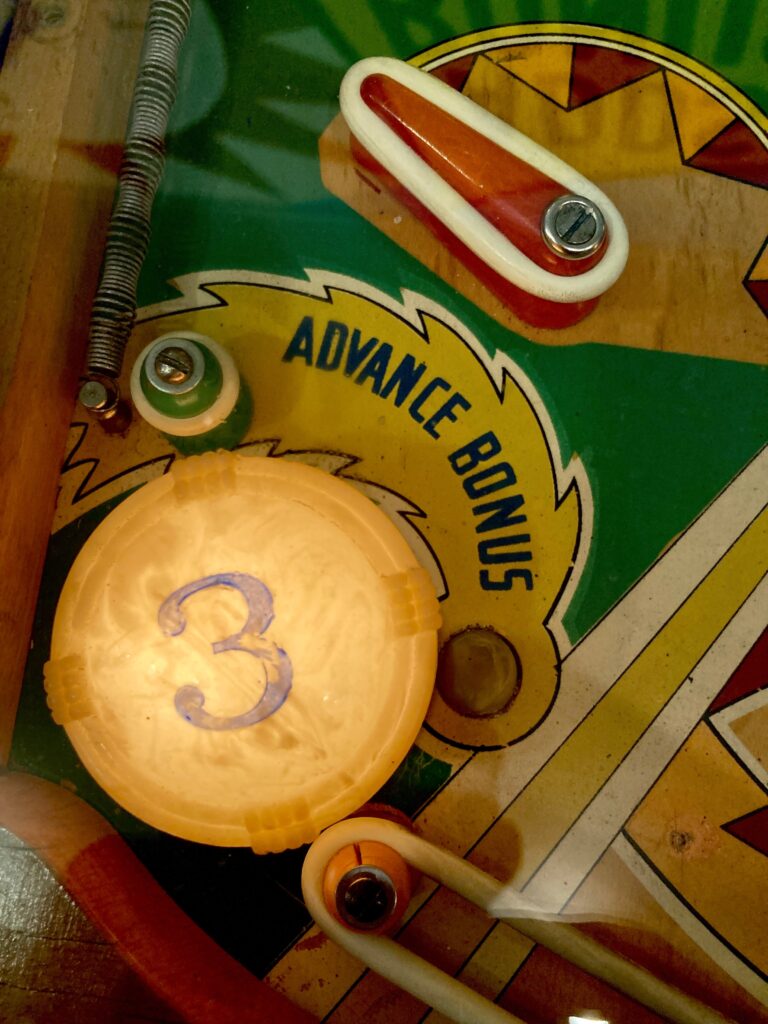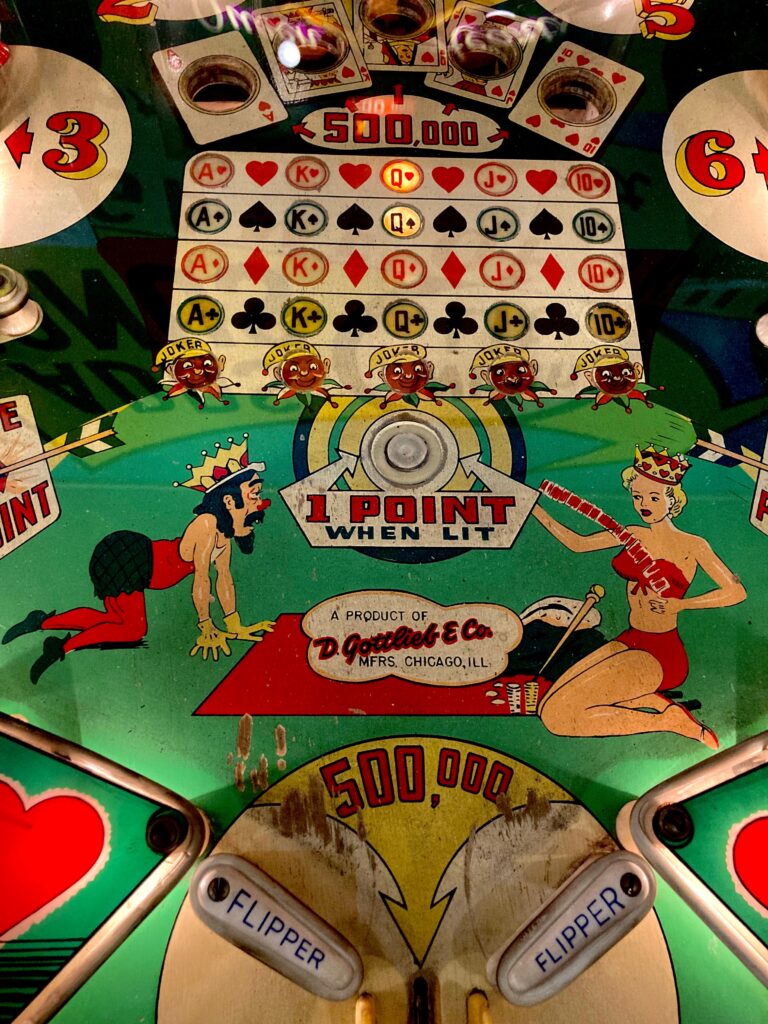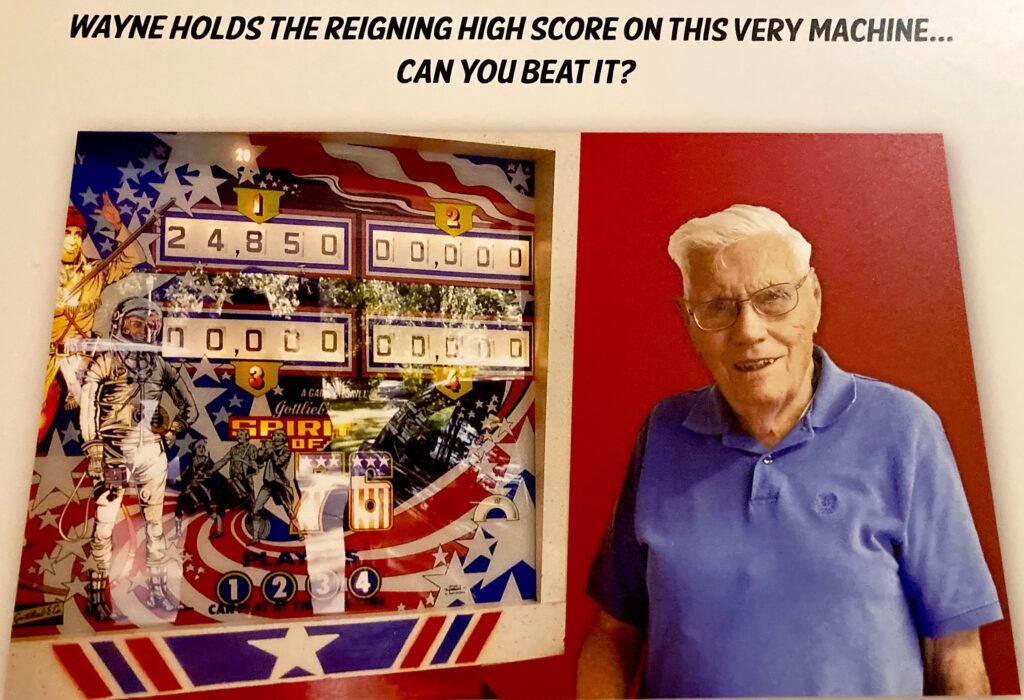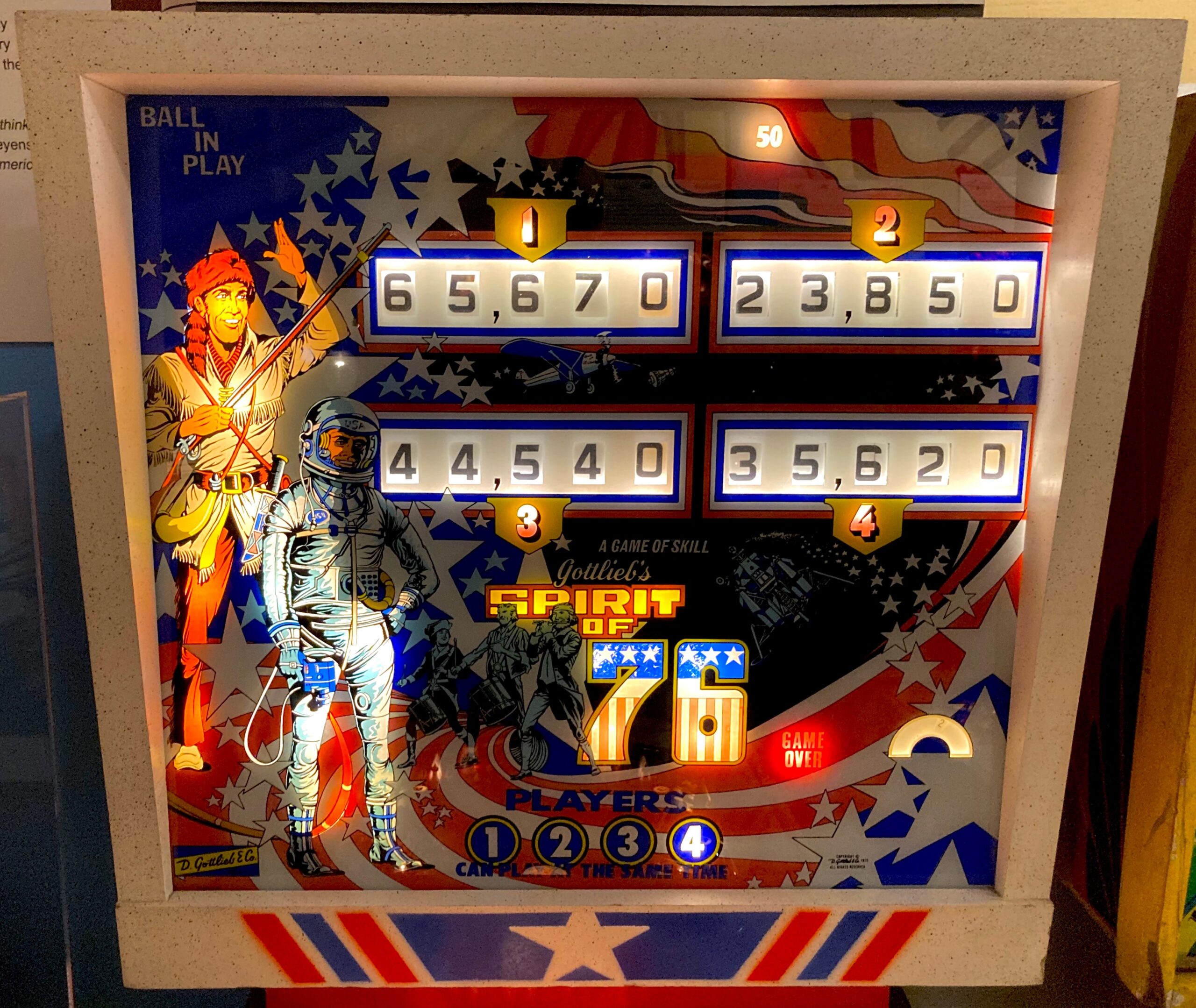By Christopher Rummel
Silver pinballs, mirroring electrons in frozen orbit above an atom’s nucleus, appear to hover in the air instead of flying madly around on a pinball machine’s playfield as they are supposed to.

The gleaming orbs, beneath which lies an old school pinball machine score reel reading “104”, are encased by plexiglass, all part of a remarkable trophy recently acquired by Alameda’s renowned Pacific Pinball Museum.
Originally presented to legendary pinball community figure Wayne Neyens in 2018, the sculpture is a unique tribute. The legendary Neyens, can take credit for nearly 160 pinball game designs and for many innovations. His long career cast him as lead designer at Gottlieb, the prolfiic Chicago based pinball manufacturing company founded in 1927.
PPM founder and Director, Michael Schiess, designed the tribute piece in collaboration with Alameda artist Marc Ribaud to create the one of a kind artifact and awarded it to Neyens in celebration of his 100th birthday in Mountain Home, Arkansas. Each year Neyens would excitedly add a year to the score reel.
Mr. Neyens got the joy of doing so 4 times, and the reel now stands eternally at 104, a static and enduring testament to his legend and longevity. One day after what turned out to be his final rotation of the reel, Neyens passed and rightfully holds the high score of all time.
Neyens showed early promise with his technical abilities, starting his career doing engineering drawings after school until he graduated. A few years later he joined the team at Gottlieb, where he would rise through the ranks until his retirement. Neyens was there when his mentor Harry Mabs developed the flipper, possibly the most significant innovation in pinball history. Wayne’s work at Gottlieb helped legitimize pinball as an amusement game, distinguishing it from the gambling games of its formative years.

This early association with gambling led to pinball being outlawed in many areas of the country. Despite the bans, demand for pinball from players and operators remained high. In a 2011 interview, Neyens spoke about this:
“You couldn’t get a pinball machine in Texas. Alvin (Gottlieb) was down in Dallas at a distributor, and the distributor is crying because he’s got nothing to sell. He said, can’t you come up with something that the players will play and that can get around the law? Alvin came back to me and said they need something in Texas that has no free plays. They want to play something down there. So I said, well, I’ll give it a shot, and I came up with the Add-A-Ball.”
With that, Neyens had successfully designed a new feature to get around the prohibition of pinball and opened up new territories for Gottlieb. Instead of awarding players free games, Add-A-Ball games rewarded skilled players with more turns on their game, eliminating the supposed gambling aspect of winning free plays.

Working within the constraints of the electromechanical era, Neyens’ expertise really showed. Engineers of this era were designing complex games with relatively primitive technology, and had to deliver a game that hit the right balance of challenging, engaging, and ultimately worth putting another coin in.
In Pinball Magazine #5, PPM President Larry Zartarian said of Neyens’ work, “The fact that so many of Wayne’s games featured no fewer than four and often five ways to achieve replays is astounding – way more fun and challenging than merely having to build up a high score.”
The Neyens’ family contacted PPM and offered the trophy for display to commemorate his legacy in the industry. Dedicated to exploring the history and people behind the games, PPM is a fitting home for this tribute to Neyens.
Visitors can view this trophy on display next to Wayne’s personal Spirit of ‘76 machine and a room full of classic games he ushered into production.


They won’t be able to beat his score on the trophy reel, but they just might exceed his all time score on the Spirit of ‘76 game if they can top 194,610 pts.
Mr. Rummel is Program Manager at PPM and Executive Director Michael Schiess contributed to this story.
